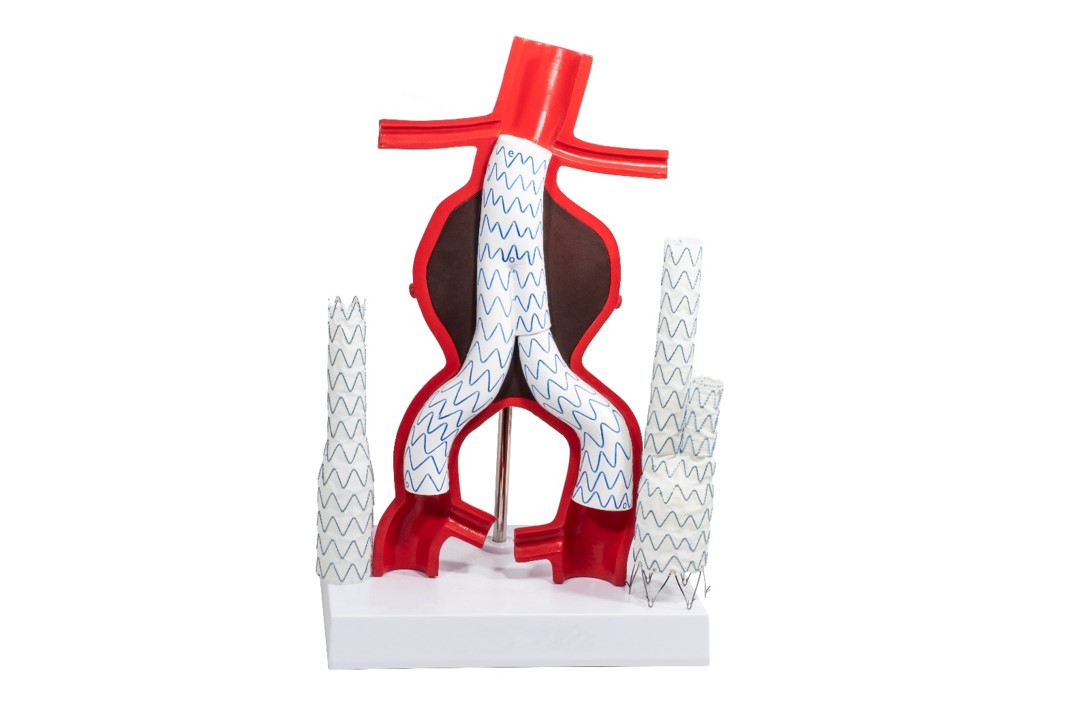Name of Medical Device
Aortic stent graft.
Description
The blood vessels are separated with conventional surgery through the femoral artery or with a minimally invasive puncture (with a vascular closure device), followed by placement of a stent graft with a catheter, an X-ray and contrast media. The aim is to treat aortic narrowing, dissection, or injury and avoid other complications.
When to Use
Abdominal aortic aneurysms are common in older age groups. If its diameter is more than 5cm, the rupture probability is significantly increased, and once ruptured, the mortality rate is higher than 50%. Therefore, aortic stent placement is a key treatment for some patients who are at high risk from conventional surgical procedures. It can achieve more than 90% success rate and stabilize or reduce aortic aneurysms. In addition, aortic stents apply to aortic narrowing, dissection, or injury.

Possible Side Effects
- If the procedure causes infection, it needs to be treated with long-term antibiotic therapy or removed surgically.
- The risks associated with contrast media include varying degrees of allergic reactions (fever, nausea, vomiting, skin rashes, dyspnea, rapid heartbeat, asthma, head swelling, bronchospasm and even sudden death from shock) or renal impairment (which may lead to kidney failure and require emergency or lifelong hemodialysis).
- Peripheral vascular embolism caused by thrombosis, claudication caused by internal iliac artery obstruction, renal artery obstruction, intestinal ischemia and limb paralysis (rare) that affect aortic branches, and stent displacement (< 5%), deformation or occlusion, even enlargement or rupture of aortic aneurysms (< 1%). These problems may require urgent reoperation (conventional or catheter surgery).
- There may still be mild pain for several months after surgery.
- Long-term follow-up reveals that some of the blood is still leaking to the original aneurysm. Some condition does not need to be treated, while some may need to be surgically stented or the branch vessels of the source of blood flow blocked.
Postoperative Care
- The wound should be kept dry and clean for one week after surgery.
- On regular return visits, the physician will arrange follow-up with computed tomography (CT), which is required for aortic diseases.
- Control of hypertesion.
- On the same diet for low oil and low salt as hypertension.
- Smoking cessation.

